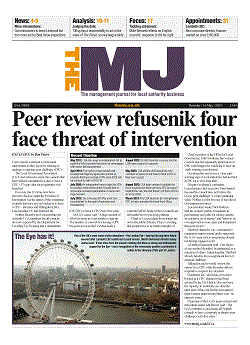Over the past few years, national and local governments have seen major changes in the way they are approaching the ownership of their physical assets.
One of the key changes has been the adoption of concepts that are now described as “asset management”.
Current asset management concepts can be viewed in three broad categories;
- Strategic – has a long term perspective (6 – 10+ years in the future) and looks at the ‘What if?’ question
- Tactical – considers medium term activities (2 – 5 years) and answers the ‘What, where and when?’ questions
- Operational – is concerned with carrying out works on the assets in the short term (0 – 2 years) and is addressing the ‘how?’ issue
It is believed that the term ‘Asset Management’ was first coined in the mid 1980’s during work undertaken in Australia. Since then, Australia and Zealand have been at the forefront of the development of the concept with the International Infrastructure Maintenance Manual, first published in 2000, which built on Australian (1994) and New Zealand (1996) manuals, becoming the de facto standard for infrastructure assets in other parts of the world.
The UK released its own version of the manual in 2002 and since then, the Institute of Asset Management has developed the PAS 55 document which is published by the BSI.
This document defines terms in asset management, sets out a specification for good practice and provides guidance on best practice. More recently the UK has also led the international effort to prepare the ISO55000 international standard on asset management.
The 2011 International Infrastructure Maintenance Manual (IIMM) published by New Zealand Asset Management Support (NAMS) defines asset management as:
‘The systematic and coordinated activities and practices of an organisation to optimally and sustainably deliver on its objectives through the cost-effective lifecycle management of assets.’
The optimal and cost effective element is closely echoed by publications from the Department for Business, Innovation and Skills and work within CIPFA calling for more investment in long term strategic planning, demonstrating that long term prevention is much more cost effective than short term reactionary repair.
This is also addressed in part by the Well Maintained Highways Code of Practise, which actually defers more to the realism of budgetary constraint.
A number of elements used together are seen as being key to successful long term highway management, namely:
- Taking a lifecycle approach over the duration of the life of the highway infrastructure
- Developing cost-effective management strategies for the long term maintenance
- Providing a defined level of service and monitoring performance
- Managing risks associated with asset failures
- Sustainable use of physical resources
- Continuous improvement in asset management practices
This can be broken down into three stages or phases; Strategic Planning, Tactical Planning and Operational Planning. This process is reflected in various industry guidelines and publications.
Even with today’s supportive software systems, the strategic planning element of the process is often deferred to day to day operational and reactionary management. Local government also tend to defer to short term maintenance or “find and fix” due to a number of issues namely:
i) Financial Pressure
ii) Pressure to meet immediate public satisfaction
iii) Exposure of the UK Highways asset to recent extreme weather patterns
iv) Liability and insurance issue caused by the differential in current infrastructure decline and the authority’s ability to halt the decline.
As the authority looks to translate customer demands and expectations into service needs with 6 to 10+ (sometimes as far ahead as 25) year horizon, it would be useful to have available strategic planning tools available to describe the impact of decision making, of what if examples and provide management and financial indicators based on those.
It should account for various factors such as generic treatments, costs, intervention strategies, desired service levels and uses them to explore different options and their expected outcomes.
We would expect such software to be supportive in the strategic planning phase and use the data contained within (such as asset data, condition data and maintenance and performance) to deliver those outcome based on past performance and future programmable metrics.
Pitney Bowes Software (PBS) are not only involved in the global conversations contributing to the development of ISO 55000, but are seeking to provide these tools to its customers within the Confirm asset management “toolkit”.
These are joint solutions Confirm, ConfirmConnect and ConfirmWorkzone blur the lines of the traditional “client/contractor” operational delivery to the benefit of both, to allow an optimal and strategic delivery to the publlic.
The ability of which displays compelling and proven metrics to demonstrate the correct alignment of maintenance activity and longer term financial redirection and reduction within the Highway infrastructure to provide robust long term maintenance application.
The result of which should allow local government to easily demonstrate to central government the desire and the need to provide immediate and mid-term management strategies for public satisfaction to offset the move from immediate operational to longer-term strategic maintenance strategies and secure the budgets required apply more permanent and robust maintenance strategies to UK Highway infrastructure.
Steve Hanks is EMEA business development manager for Pitney Bowes

